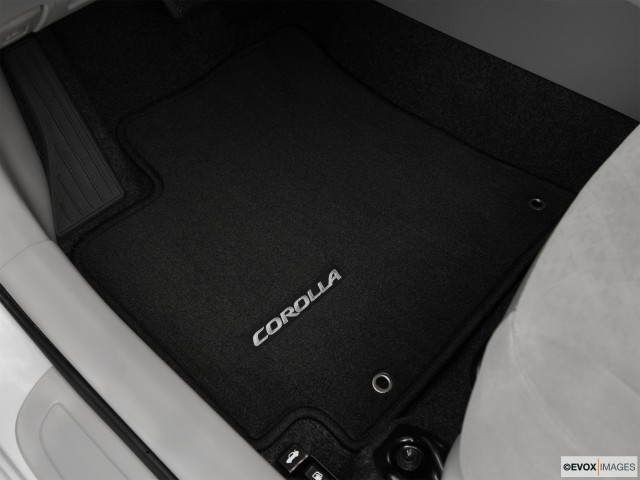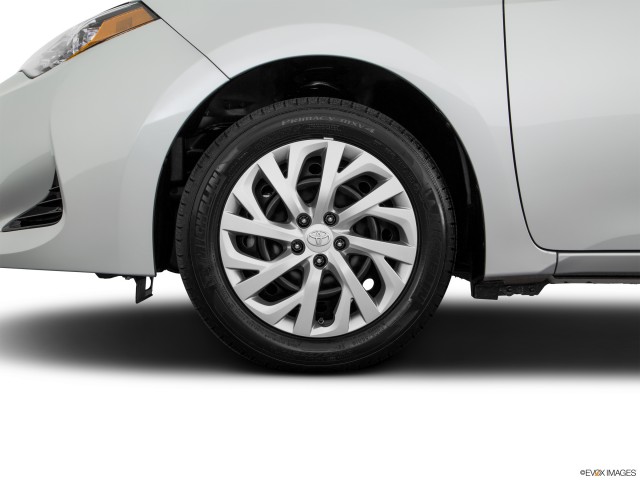The Toyota Corolla first hit U.S. shores in the late 1960s. As of 2016, more than 44-million have sold across the world, making it one of the most popular sedans ever made. It has built a reputation for being both affordable and reliable.
However, even the best cars have recalls (some more than others).
How many recalls has the Toyota Corolla had?
The Corollas first recall happened in 1991. As of 2016, 58 recalls were issued on a variety of parts. Many involved faulty airbags that could cause serious harm if not fixed. This is one reason it’s so crucial to take care of a recall if one is issued.

Let’s now take a look at these recalls according to the parts that prompted them.
Airbags
Toyota issued the first airbag-related recall in 1996 for the airbag warning light. In the event of a spill, liquids could damage it and cause the airbag to deploy. The fix involved having a tech cover the sensor to protect it from getting wet.
In 1997, a similar problem appeared where the airbag might deploy due to a mild jolt. Techs have to reprogram the computer to repair this issue.
The Corolla went on for 16 more years before another airbag-related recall. Then, in 2013, one was issued for the supplemental restraint system, which was prone to shorting. If the system did short, the airbags could deploy and potentially injure passengers.
Techs need to replace the airbag control module and install a noise filter to resolve the issue.
In 2014, Toyota sent out a recall for the flexible flat cable, which could become damaged when moving the steering wheel. This could result in the airbag not receiving the signal to deploy in the event of a crash.
The repair involved having a tech inspect and replace any damaged cables and move them all to a better spot.
Three airbag recalls went out in 2015. Two addressed airbags made by Takata, which could explode and send out metal fragments in the event of a collision. The other was for a faulty airbag control module that would trigger them to deploy without cause.
The fix? Techs have to replace all the faulty parts.
More Takata-related recalls went out in 2016, 2017, 2018, and 2019. Additionally, in 2019, Corolla owners were informed that their passenger-side frontal airbags might not unfold in certain hot-temperature conditions.
Replacement of the problematic airbag fixes the issue.
The latest airbag recall that was issued took place in early 2020 for a faulty airbag electronic control unit. The solution meant having a tech inspecting the module for damage and installing a noise filter to keep it from malfunctioning.
Floor Mats
In 2009, Toyota sent out a recall for over 3.8 million vehicles addressing their floor mats. Due to their poor fit or improper position, the gas pedal could stick, causing the car to accelerate on its own.

In 2010, the recall was expanded to include all 2009 to 2010 Corollas as well. Technicians simply replace both floor mats as well as both pedals to remedy this potentially deadly issue.
Structure
Only one structure-related recall has gone out for the Toyota Corolla, and that was in 2011. It relates to models equipped with a third-party navigation unit or Bluetooth hands-free device.
While installing such devices, the retention clip for the A-pillar trim could get damaged, causing it to pop loose during a collision. The fix for this issue involves replacing the retention clip.
Powertrain Components
The powertrain-recalls began in 2002 when Toyota realized the axles were not tightened enough during the manufacturing process. If any of these bolts came loose, it would be noisy, but if they fell out of the hub entirely, it could result in an accident.
This issue only included Corollas with VINs that started with “1NX” for the 2002 model year. Thankfully, all it takes is tightening the bolts to repair the problem.
Eight years later, another powertrain recall came up. This time it involved the engine control module for 2005 to 2008 Corollas with the 1ZZ-FE engine. On this configuration, the solder-points on the module could crack apart, resulting in several faults. Replacement of the module remedies the issue.
In 2018, Toyota noticed an issue with their Continuously Variable Transmissions and promptly sent out a recall notice.
The torque converter impeller blades could break free, causing the engine to stall. This occurred most often while it was under heavy load, but could happen any time while driving, possibly causing an accident.
Both the transmission and torque converter needs to be replaced to remedy this issue in full.
Suspension Parts
2010 marked the first suspension recall on the Toyota Corolla, due to a fault found with the front strut mounts. These defective mounts lack a crucial weld joint at the bearing housing, which could cause the strut to detach.
To fix this issue, technicians just have to replace the strut mount at the front of the car.
Braking System
In 2009, the Corolla received its first and only recall related to the braking system. The notice indicated that when driving in freezing conditions, some models may experience a sudden decrease in stopping power.
This was due to condensation freezing in the intake manifold port for the brake vacuum line.
Techs have to relocate the affected vacuum port to prevent it from freezing up and causing problems while braking.
Wheels and Tires
A total of three tire/wheel recalls were issued for the Corolla between 1998 and 2017. The 1998 notice let owners know that their lug nuts could potentially work themselves loose and even fall off. If all the lug nuts fall off, then the wheel will likely go as well, potentially causing a severe crash.

Thankfully, replacing the lug nuts takes care of this issue.
Another recall in 2003 involved this same issue but only applied to Corollas with factory aluminum-alloy wheels. On some of these wheels, it was found that the lug nut holes were drilled too big. Unlike the previous issue, this one requires replacing all of the affected wheels.
In 2017, Toyota posted a recall for the emergency spare-tire on a variety of their vehicles, including the Corolla. The spares were not inflated to the proper air pressure rating before leaving the factory, which could impact their performance in an emergency situation.
To fix this problem, all that’s required is to check the pressure and fill it to the proper level.
Lighting and Visibility
A handful of lighting and visibility recalls have appeared through the years for the Toyota Corolla. They first started in 2006 when seven recalls went out for exterior lights that were not bright enough or did not meet federal standards.
To remedy the issue, vehicle owners could either go into the dealership for repairs or use their refunds to buy and replace the bulbs themselves.
The first visibility-related recall went out in 2008 when the power windows started to malfunction. In particular, the glass would pop out of the regulator for the window, causing it to sit askew or even fall into the door.
Luckily, repairing the problem only meant installing new bolts.
In 2012, it was discovered that the switch for the power windows could overheat due to a lack of internal lubrication. Without repairs, the switches could melt and could even catch on fire.
Even if they do not go up in flames, the melted switch could fail to operate, leaving the windows in their current position until repaired.
Thankfully, lubricating the internal parts resolves the issue. However, if the switch is already damaged, it has to be replaced.
The last visibility recall came out in 2015 due to windshield wiper switch assemblies shorting out. If that happens, the wipers immediately stop working, leaving the driver without a way to clear their windows.
In heavy rains or other adverse weather conditions, the lack of wipers could cause a severe collision. The fix is simple, it involves swapping out the wiper switch.
Seats and Seat Belts
The seat-belts and seats have only been recalled a few times each. Problems with the latter began in 2013 when it was noticed that the calibration systems did not account for extra accessories.
Without the right calibration, the system cannot correctly detect passengers, and may not deploy the airbags. Technicians have to test and recalibrate the sensors to remedy this problem.
Issues related to the seat heaters were found in 2014. When occupied, the cushion on the seat can press down on the wiring and make it short out and possibly set fire.
The solution? Techs have to disconnect the heaters and refund their cost, removing the function from the vehicle entirely. The same issue spurred a recall in 2016 to cover even more affected-vehicles.
The first seat belt issue occurred in 1944 when it was discovered that the heat-treated assemblies could break apart. If that happens, they could fail to properly restrain the occupants and put them at risk of severe injury or death.
New anchor straps fix this issue.
The second and final seat belt recall was in 2019 for the dual-mode locking mechanism on the rear belts. The lock does not always engage as it should, resulting in the seat belt coming apart during a crash. Affected assemblies are replaced to resolve the issue.
Additional Recalls
The remaining recalls refer to incorrectly labeled parts and malfunctioning electrical components.
The speed control, for example, was recalled in 1996 and 2000. The first happened when the cruise control system kept accelerating instead of shutting off at the desired speed.
The solution? Replacing the cruise control assembly.
The next one involved the gas pedal sticking due to a break in the linkage. Thankfully, this only required replacement of the faulty c-clip.
Another electrical component that received a recall was the battery in the 1995 Toyota Corolla. This part did not have the proper welds inside, causing the battery to fail to start the car or even outright explode. Replacing the battery was the fix.
In 1994, a recall went out for a harness connector for the power windows that routed to the floor. In areas that use road salts, water coming into the car could bridge the terminals and cause a fire. Removal of the harness remedies the issue.
Over the years, multiple incorrect labels have appeared on the Corolla, resulting in several recalls. These labels lacked the required warnings needed to keep drivers and passengers safe (and comply with federal standards).
Drivers just have to return to the dealership for new labels to resolve this problem.
How to Find Out if Your Corolla Needs Recall Repairs
Although recall notices go out to vehicle owners right away, they do not always end up in the hands of their intended recipients. When that happens, the cars may go unrepaired, potentially resulting in problems down the road.
For this reason, you should always check if your new-to-you car has pending recalls before driving it around.
For Corollas made from 1999 on, it is easy to use Toyota’s lookup tool. Just navigate to the site, input the plate number or VIN (plus your state of residence), and hit submit to see a list of open recalls.